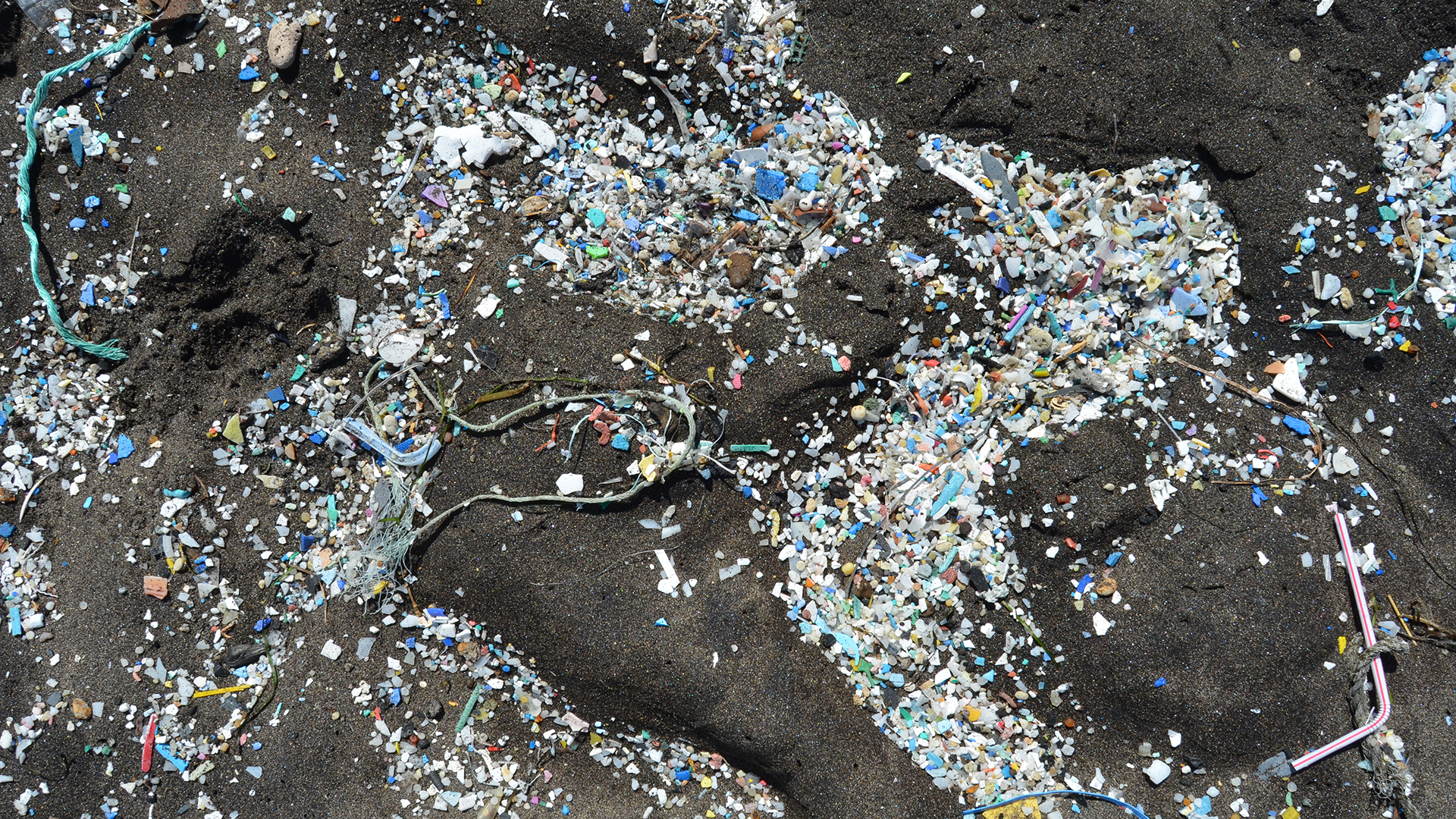15 million tons of microplastics pollute the seafloor
Plastic debris is twice as abundant in the deep ocean as it is on the sea surface.

An estimated 15 million tons (14 million metric tons) of microplastics have settled in the deep ocean, according to a new report by Australia's national science agency. That's more than double the amount of plastic pollution at the ocean's surface.
Researchers sampled seafloor sediments in locations hundreds of miles from Australia's coastline, discovering that the quantity of microplastics was far higher than anticipated.
From that evidence, they calculated how widespread microplastics might be in ocean sediments worldwide — and their staggering number was a conservative estimate, they wrote in the report.
Related: Images of the Great Pacific Garbage Patch
Prior studies have shown that millions of tons of plastic enter the ocean each year. And though scientists recognize plastic pollution as an important ecological issue, little is known about plastic accumulation near the sea bottom and what its impacts might be on marine life and ecosystems. This is especially true of microplastics; plastic particles that are less than 0.2 inches (5 millimeters) in length, no bigger than a sesame seed, according to the National Ocean Service.
"The extent of microplastic pollution in deep-sea sediments has historically been poorly known," said study co-author Denise Hardesty, a principal research scientist with Australia's Commonwealth Scientific and Industrial Research Organisation (CSIRO), a government agency responsible for scientific research.
"That's understandable given how difficult, time-consuming and costly it is to sample the depths of the 'big blue'. But understanding how much microplastic finds its way to the seafloor is imperative for predicting the distribution and potential impacts of global plastic pollution," Hardesty told Live Science in an email.
Sign up for the Live Science daily newsletter now
Get the world’s most fascinating discoveries delivered straight to your inbox.
Separated from sediment
For the new study, the scientists used remotely operated vehicles (ROVs) to scoop 51 seafloor cores — cylinders of packed sediment — from six locations in an ocean region off the coast of southern Australia, known as the Great Australian Bight (a "bight" is a curve in a coastline holding an open bay). They sampled at depths ranging from 5,430 to 10,046 feet (1,655 to 3,062 meters), at distances of 179 to 221 miles (288 to 356 kilometers) from the shore.
Rinsing the samples and spinning them in a centrifuge flushed away organic matter, making the microplastics easier to detect. The researchers then stained the samples with fluorescent dyes, isolating and identifying microplastic particles with an optical microscope that used fluorescence to highlight organic material, according to the study.
In the samples, a single gram of seafloor sediment held as many as 14 plastic particles. Based on the average number of particles in the samples and the size of the ocean — which covers 139.4 million square miles, or 361.1 million square km — the scientists calculated that the total, global amount of microplastics on the seafloor would be between 9 million and 15 million tons (8 million and 14 million metric tons).
However, the amount of ocean microplastics worldwide could easily be much higher, Hardesty told Live Science. Particle density from the Great Australian Bight was likely lower than in ocean regions that are nearer to heavily populated coastal areas. And plastic microfibers, another known source of microplastic ocean pollution, were omitted from the analysis, in case the fibers they found in the sediment cores were introduced by clothing or other fabrics after the samples were collected.
"We didn't expect to have such high recorded levels of microplastics, particularly given how careful our sampling approach was," Hardesty said. "Therefore, our results are a conservative estimate of how much microplastic there is in deep-sea sediments."
The impacts of larger plastic pollution on ocean life and ecosystem health are all too clear, visible in great garbage patches that collect at the sea surface; as hardened "plasitcrusts" coating island coastlines; as deadly nooses that strangle sharks and rays; and as obstructions that fill the bellies of dead sea turtles and whales.
"These findings highlight the extent of plastic pollution, and shows that no area of the ocean is immune to the plastic problem. We hope this work has people thinking about the choices we make, the impacts of what we make, buy, use and discard and where it can end up," Hardesty said.
"Hopefully, people start to see the connection between what we do in our daily lives and how far-reaching those impacts may be on what are considered the most pristine ecosystems in the world," she said.
The findings were published online Oct. 6 in the journal Frontiers in Marine Science.
Originally published on Live Science.

Mindy Weisberger is an editor at Scholastic and a former Live Science channel editor and senior writer. She has reported on general science, covering climate change, paleontology, biology and space. Mindy studied film at Columbia University; prior to Live Science she produced, wrote and directed media for the American Museum of Natural History in New York City. Her videos about dinosaurs, astrophysics, biodiversity and evolution appear in museums and science centers worldwide, earning awards such as the CINE Golden Eagle and the Communicator Award of Excellence. Her writing has also appeared in Scientific American, The Washington Post and How It Works Magazine. Her book "Rise of the Zombie Bugs: The Surprising Science of Parasitic Mind Control" will be published in spring 2025 by Johns Hopkins University Press.









